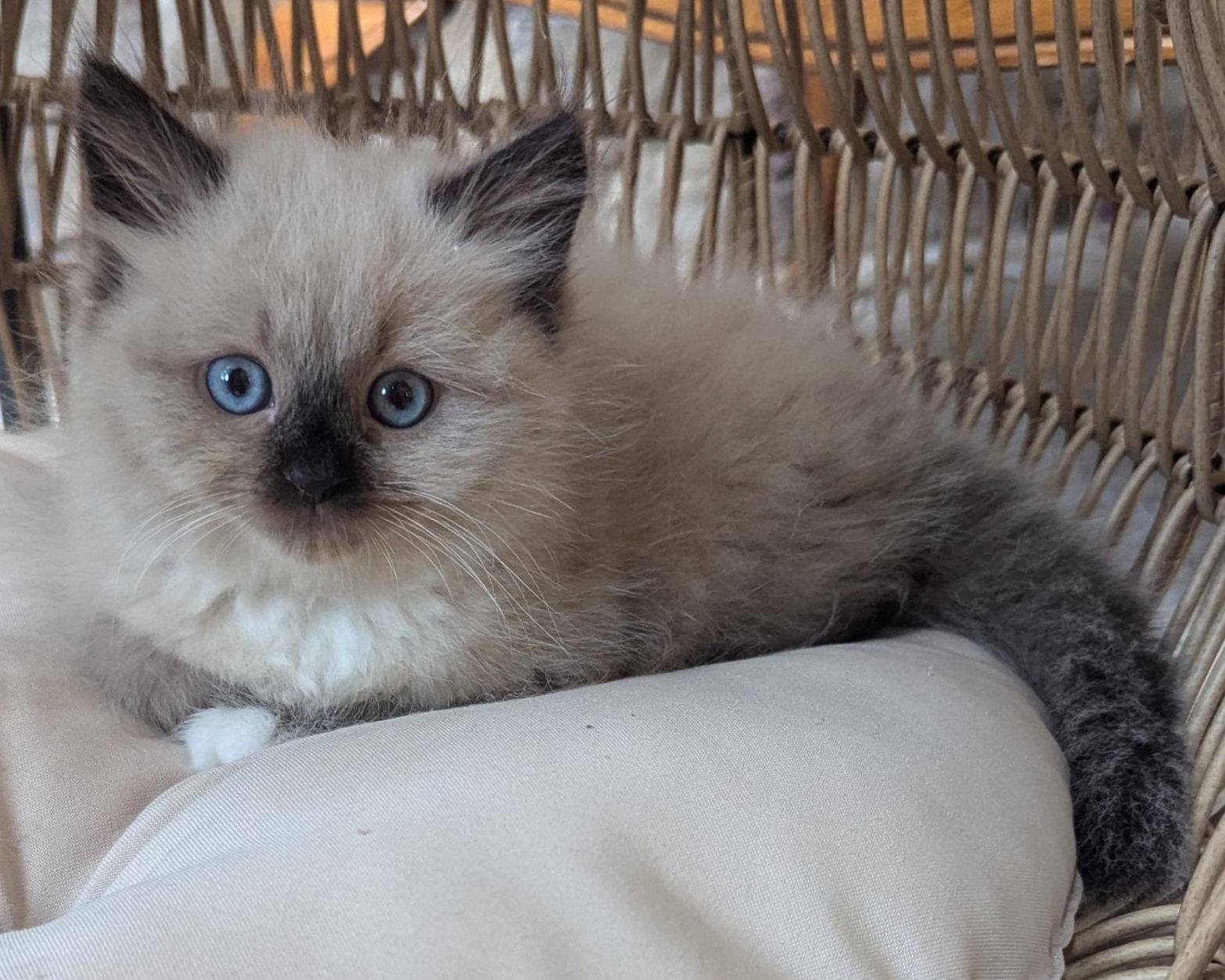Bringing Your Kitten Home
For pick up, all you will need is a carrier with a small towel or blanket inside. Your kitten will not need any food or water for the journey; they will be okay for a few hours. They will not need a litter box in the car, even if you have a several hour trip. All kittens will be litter box-trained at 5 weeks, but without the box in the car, they won’t go. The kitten will most likely cry at first, but most settle down and go to sleep after the first little while and sleep for hours.
At home, have a small area or room with litter, toys, food, and water, and let him/her get familiar with this area first. The first few nights, they will be missing their litter mates and mother, so you will want to have them in a room with you.
When the kitten first comes home, in the setup room, open the carrier, sit quietly in the room, and allow the kitten to explore on its own. After they have explored a little, it can be a good time to play with them with a toy to start bonding.
After the first day or so, as they seem ready, allow them to explore further outside the room.
Something to keep in mind for those with allergies: your new kitten’s FelD-1 levels will be higher the first few days due to the stress of the change in homes, but they will lower back down. Daily wiping with a damp cloth can help, and their levels will continue to drop even more after being spayed/neutered.
Toys and play are a great way for them to get familiar with you and bond, especially with children. Encourage children to first use a toy to play with the kitten and allow them to get used to each other that way. Also, using toys for play instead of hands will deter unwanted scratching.
Have plenty of scratching posts available with different surfaces and heights to deter unwanted scratching of furniture. When the kitten scratches furniture, say “No,” stop the kitten, and immediately move her to the scratching post. Praise her and reward her with a treat.
Cat trees will help deter unwanted climbing of curtains. Cats love heights and will need a place to climb
Always have water and food available. Kittens should be free-fed for at least 1-3 years or more of their lives. Siberians are a slower-maturing breed. They are not fully grown until at least two and can keep maturing until five years old. Many adults also do well being free-fed.
We recommend waiting to feed canned or wet food for a couple of weeks as it can give them loose stool when they are adjusting to their new environment. After two weeks, supplementing with wet food can be beneficial. All kittens will be used to eating dry food when they go to their new homes. You don’t have to use wet food. Some cats don’t like it. But use a high-quality dry kibble. We recommend a water fountain, especially if dry-fed only. Kittens/cats love running water, and it encourages them to drink and keeps them healthy.
Kittens need their nails trimmed about every three weeks. Trimming while they are sleepy or wrapped in a towel helps. Rewarding them with a treat makes them more patient with brushing. Daily brushing is not necessary, but it is a nice way to bond and help them get used to brushing and enjoy it. Once they are around a year old and have their adult coat, they will need weekly brushing (and daily brushing in the spring when they molt their winter coat).
All kittens will be on Purina Pro Plan Live Clear kitten feed, and we highly recommend continuing that food for the first year of their lives. We also recommend using any premium clumping clay cat litter that is fragrance-free. We especially like Dr. Elsey’s Kitten Litter (without clay) or Dr. Elsey’s Ultimate Clay Clumping Litter. I like to mix both.
Enjoy your new kitten!





